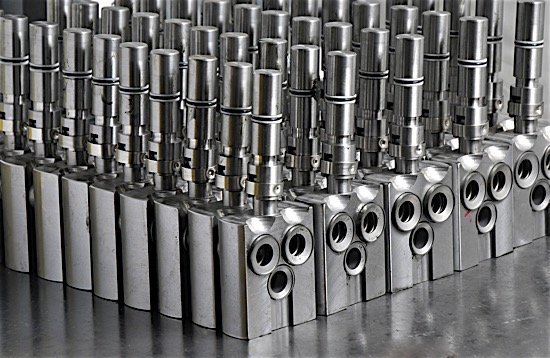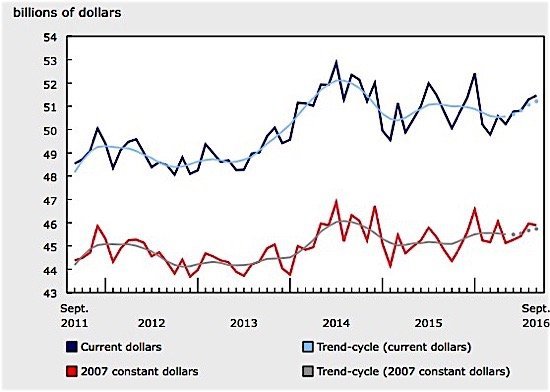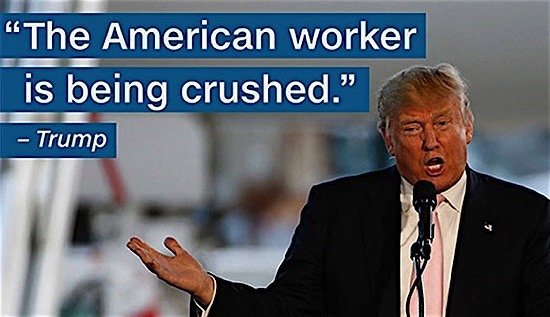
Manufacturing sales rose for the fourth consecutive month in September, Statistics Canada reports, mainly on the strength of transportation equipment and fabricated metal industries. The 0.3 per cent rise was higher than economists had expected, and sales for the month had a value of $51.5 billion. This was down 0.2 per cent in constant dollar terms, which indicates that volumes of sales were were actually lower.
The transportation equipment industry includes railroad rolling stock, motor vehicles and aerospace parts and products. All of these experienced gains in September, with sales rising 1.5 per cent to $10.6 billion. Fabricated metal producers reported a 2.4 per cent increase in sales, worth $2.7 billion, mainly in architectural and structural metals.
The largest gains by province were in Quebec and Ontario. Ontario’s sales were up 0.3 per cent, coming to $25.1 billion, again mostly due to transportation equipment and fabricated metal industries.

Despite the relatively good news for manufacturers, a cloud hangs over the sector in the wake of the US election. With Donald Trump threatening to take a hard look at NAFTA and to scrap it altogether if he doesn’t like what he sees, Canada could be in for some hard bargaining. But one of the men who negotiated the deal on the US side back in 1993, Mickey Kantor, says the pact is terribly out of date and needs to be revisited. While he believes in NAFTA and touts the economic benefits it has brought to all three signatories, he says it was negotiated in a different time, a world where there was no internet, no cloud, no problem with data transfer.
The fact that the agreement is out of date does not mean it’s a bad agreement. However, reopening it could lead to more problems with perennial Canada-US irritants like softwood lumber, dairy products, and beef.
The importance of Canada’s trade with the US cannot be overstated, and one sector that has been critical to that export economy is manufacturing. According to the Canadian Manufacturers and Exporters, which represents more than 10,000 manufacturing exporters, Canada’s trade deficit in manufactured goods has “ballooned” in recent years. The group has therefore launched an initiative, Industrie 2030, to double manufacturing in Canada by 2030. This will require growing the labour pool, incorporating new technologies, fostering innovation and commercialization of new products, improving the business environment and increasing market access for Canada’s manufactured goods. That access, the group says, has dropped by 2 per cent over the past fifteen years.

Meanwhile, Ontario’s Economic Development Minister, Brad Duguid, has said it is too soon to worry about Donald Trump’s campaign rhetoric about pulling out of NAFTA. According to Duguid, the value of trade between the two countries is $687 billion a year, half of that coming from Ontario. “Make no mistake,” he said. “They need us nearly as much as we need them.”
The fact that Trump was elected indicates that he “struck a chord” with those who feel disconnected from the economic growth that others are experiencing, regardless of the fact that unemployment in the US fell to just 4.9 per cent under Barack Obama. That disconnect between what people feel and what the economic indicators tell us is real, and governments need to recognize it, said Duguid. Some people have good reason to feel that they have been left behind, “because they have,” especially in the manufacturing sector. But it’s not realistic to think we can “roll back the clock” and return to “good old days” that no longer exist.

































